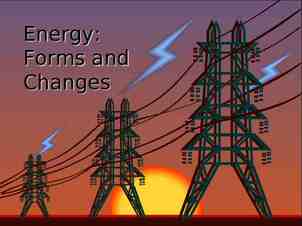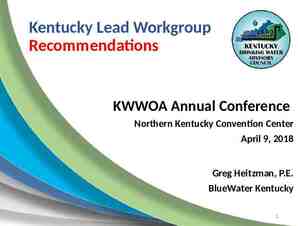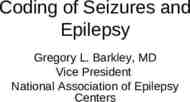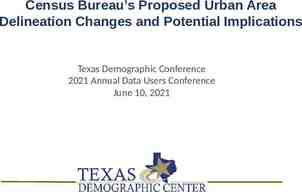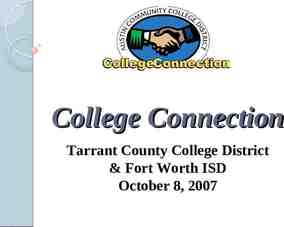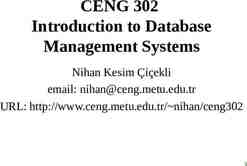Chapter 11 & 12 Entity-Relationship (E-R) Model
14 Slides43.00 KB

Chapter 11 & 12 Entity-Relationship (E-R) Model

Agenda Characteristics of E-R Model Components of E-R Model Example of E-R Model Enhanced E-R Model

Characteristics of E-R Model Semantic data model Express the logical properties of an enterprise database Design tools and documentation for data base structure No physical DBMS Proposed by Dr. Peter Chen Unified Modeling Language (UML)

Components of E-R Model Entity Attribute Key Relationship Structural constraints on relationship

Entity Definition – An object or concept Types – Strong entity (parent, owner, dominant) – Weak entity (child, dependent, or subordinate) Diagram Notation – Rectangular

Attribute Domain Types – – – – – Single Composite Single-valued Multi-valued Derived

Key Candidate key Primary key Composite key

Relationship Definition – Association among entities Diagram Notation – Line – (relation or role name) Degree of a relationship – Number of participating entities – Types Unary (recursive relationship) Binary Ternary Quaternary

Structural Constraints on Relationship Cardinality constraints – – – – Zero-to-one 0.1 Zero-to-many 0.* One-to-many 1.* Many-to-many *.* Participation constraints – Total (mandatory, every one involved) – Partial (optional, only some involved) Improper relationship – Fan trap (ambiguous pathway) – Chasm trap (missing pathway)

Enhanced Entity-Relationship Model Additional entity types – Superclass: including one or more distinct subgroups in the data model – Subclass: a distinct subgroup of an entity type in the data model Attribute Inheritance – Specialization hierarchy (specialization: maximizing the differences between members of an entity by identifying their distinguishing characteristics) – Generalization hierarchy (generalization: minimizing the differences between entities by identifying their common characteristics) – Is-A hierarchy Constraints on specialization/generalization – Participation (mandatory, optional) – Disjoint: disjoint (or), non-disjoint (and) Other – Aggregation (has a or is part of) – Composition (strong ownership of aggregation)

Design Steps Identify – – – – – – Entity types, relationship types Cardinality and participation constraints Attributes Keys Specialize/generalize EER diagram EER model example

Create an enhanced ER diagram for a rental management using following entities: – Rental agency – Staff Part time Full time – Owner – Renter – Property Business Home

Points To Remember Characteristics of E-R Model Components of E-R Model Example of E-R Model Enhanced E-R Model

Assignment Review chapters 5, 6, 9, 10, 11, and 12 Read chapter 13 Homework assignment – 11.11 (enhanced e-r diagram) – Due date: Exam 2 date:

